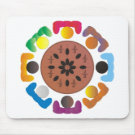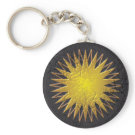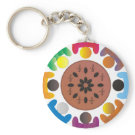Tips on Doing Word Problems
One of the most common complaints I hear from my Math students is that
(There are certain works that point you in the right direction as far as whether you use addition, subtraction, multiplication or division)
Here are some hints on dealing with them without an aspirin bottle.
First step: Read the problem and look for specific words
 Many students have trouble with word problems. A word problems is a math problem that is described rather than written as a math problem would be. For example:
Many students have trouble with word problems. A word problems is a math problem that is described rather than written as a math problem would be. For example:Jason, Nina and Susan all had raisins as a snack for lunch. They decided to count the raisins they each had. It turned out that Nina and Jason had the same number of raisins and Susan had three times as much as each of them. Together, they had 45 raisins. How many raisins did Susan have?
The first thing you need to do is put this word problem into numbers -- create an equation that says the same thing as the word problem. We notice there are three people with an undisclosed number of raisins. But there is a relationship between those numbers.
Let's call the number of raisins Nina has X. Since the number of raisins Nina has is equal to the number of raisins Jason has, Jason also has X raisins. Susan has three times as many raisins or 3X raisins. We are also told that the number of raisins they all had equaled 45. So we can now set up the problem:
X + X + 3X = 45 (the number of raisins Nina has plus the number of raisins Jason has plus the number of raisins Susan has equals 45)
This is now easier to solve -- 5X = 45; X = 9; 3X = 27
So Nina and Jason each have 9 raisins and Susan has 27.
(To check it, add the numbers together and see if it adds up to 45 -- 27+9=36+9=45)
That, of course, was a relatively simple example.
Next Step: Break it Down and Turn it into a Math Problem
 The trick with word problems is to break them down to their component parts. Here is a problem:
The trick with word problems is to break them down to their component parts. Here is a problem:At a vegetarian restaurant, the cost of two
veggie burgers and five orders of oven fried
potatoes is the same as the cost of four veggie burgers and two orders of oven fried potatoes. How many orders of oven fries could you buy for the same amount of
The first thing you have to do is figure out how to turn this problem written in English to a problem written as an algebraic equation.
Here's the breakdown:
At a vegetarian restaurant, this phrase is not part of the equation
the cost of two veggie burgers and five orders of oven fried potatoes is the same as the cost of four veggie burgers and two orders of oven fried potatoes. This is the main part of the equation. Let's call the price of veggie burgers X and the price of oven fries Y. This section can then be written as 2X + 5Y = 4X + 2Y
In this case, you need to solve for X in terms of Y or Y in terms of X (since there are two variables and the answer doesn't require you to find the price of either item). So... you first can subtract 2X from either side giving you 5Y = 2X + 2Y
then subtract 2Y from either side giving you 3Y = 2X
Since the question is:
How many orders of oven fries could you
Compugraph Designs' Printfection Store
This apron is only one of several Math themed items at our store:
Compugraphd Printfection site
(Click on the picture to go directly to this product's page)













 When you need to find the Lowest Common Denominator, the first thing you need to do is factor the two denominators (You'll understand why later). Let's say we have two fractions, 3/78 and 5/98. We need to add these two fractions and they don't have the same denominator.
When you need to find the Lowest Common Denominator, the first thing you need to do is factor the two denominators (You'll understand why later). Let's say we have two fractions, 3/78 and 5/98. We need to add these two fractions and they don't have the same denominator. So now that we have the two denominators factored, we have to use that factoring to figure out what the Lowest Common Denominator is.
So now that we have the two denominators factored, we have to use that factoring to figure out what the Lowest Common Denominator is. If you want to find out if a number is prime, you don't have to try to divide it by every number up to that number. (This would be really time consuming, even using [the bane of my existence] a calculator if you are trying to find out if a number such as 57,967 is prime!). First of all, 2 is the only even prime number, so other than 2, there are no even prime numbers. Second of all, any number ending in a "5" is divisible by 5 (15 is 3 X 5, 25 is 5 X 5, 35 is 7 X 5, etc.) so, other than 5 itself (which is prime) no number ending in a "5" is prime.
If you want to find out if a number is prime, you don't have to try to divide it by every number up to that number. (This would be really time consuming, even using [the bane of my existence] a calculator if you are trying to find out if a number such as 57,967 is prime!). First of all, 2 is the only even prime number, so other than 2, there are no even prime numbers. Second of all, any number ending in a "5" is divisible by 5 (15 is 3 X 5, 25 is 5 X 5, 35 is 7 X 5, etc.) so, other than 5 itself (which is prime) no number ending in a "5" is prime.











